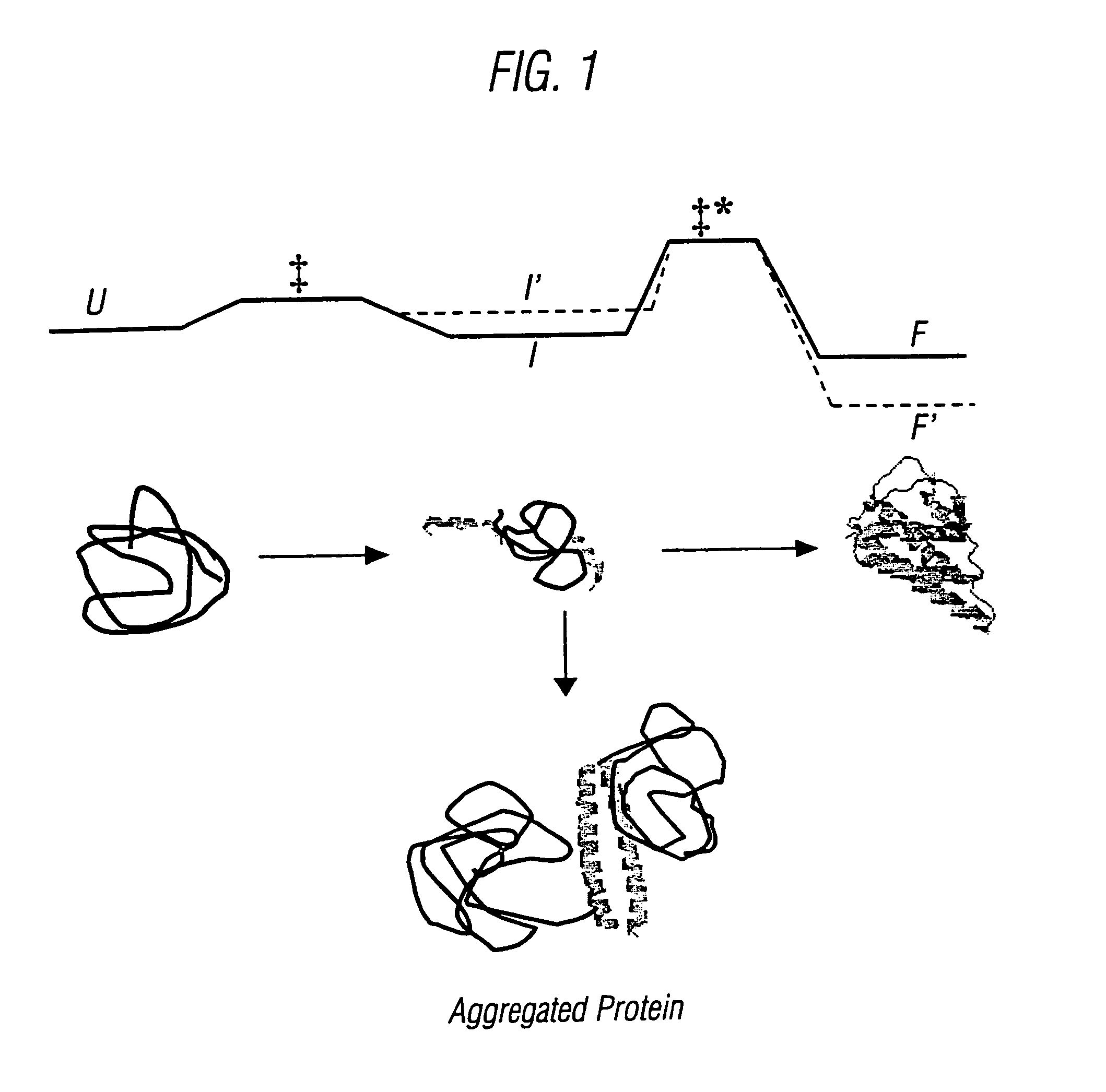Modified cytokine
a cytokine and cytokine technology, applied in the direction of peptide/protein ingredients, immunological disorders, drug compositions, etc., can solve the problems of generating biological responses, little is known about the efficiency and viability of other host organisms, and the therapeutic potential of soluble receptors and monoclonal antibodies is rather limited, so as to improve the intrinsic stability of peptides and their resistance to proteolytic degradation, and prolong the time necessary
- Summary
- Abstract
- Description
- Claims
- Application Information
AI Technical Summary
Benefits of technology
Problems solved by technology
Method used
Image
Examples
example 2
In Vivo Folding of the IL-4 Variants
[0114]The designed mutants and the wild type protein were overexpressed in three different E. coli strains, in a number of different conditions.
[0115]Only DE3 strains were used to allow expression with T7-based expression plasmids. These strains contain a chromosomal copy of the T7 RNA polymerase gene under lacUV5 control. Addition of IPTG to the growth medium, induces transcription of T7 RNA polymerase which can then mediate the transcription of the target gene under the control of the T7 promoter in the expression plasmid (Furlong et al., 1992).
[0116]Both the wild type protein and the mutants were expressed to high levels in the different strains, making up to 60% of the total cellular protein. IL-4WT invariably formed inclusion bodies in the three strains, under all the conditions tested. However, when the mutants (IL-4L23S, IL-4W91S, IL-4L23SW91S, and IL-4BChelix) where overexpressed in AD494, a thioredoxin reductase deficient strain (trxB′), ...
example 3
Characterization of the Soluble IL-4 Mutants
3.1 Methods
Solubility Tests
[0122]Escherichia coli AD494 (DE3), BL21 (DE3) and W3110 (DE3) were transformed with the plasmids coding for the IL-4WT and the mutant proteins. In each case, 1 L flasks with LB medium were inoculated with a single colony and incubated on a shaker at temperatures ranging from 15–37° C., in the presence of 100 mg / l of ampicilin. Protein expression was induced at OD600 0.4–1.0, at different temperatures, using IPTG concentrations ranging from 0.1 to 1 mM. In the case of BL21 (DE3) and W3110 (DE3) the culture was incubated for 3 h after induction, and the cells harvested by centrifugation. In the case of AD494 (DE3) protein expression was induced overnight. In all cases, the harvested cells were resuspended in 25 mM Tris-HCl pH 8.0. Cell disruption was initiated by incubating the cells with 1 mM MgCl2, 20 ug / ml lysozyme and 10 ug / ml DNAse and then completed using a French Pressure Cell. The soluble fraction was sepa...
PUM
| Property | Measurement | Unit |
|---|---|---|
| Temperature | aaaaa | aaaaa |
| Temperature | aaaaa | aaaaa |
| Temperature | aaaaa | aaaaa |
Abstract
Description
Claims
Application Information
 Login to View More
Login to View More - R&D
- Intellectual Property
- Life Sciences
- Materials
- Tech Scout
- Unparalleled Data Quality
- Higher Quality Content
- 60% Fewer Hallucinations
Browse by: Latest US Patents, China's latest patents, Technical Efficacy Thesaurus, Application Domain, Technology Topic, Popular Technical Reports.
© 2025 PatSnap. All rights reserved.Legal|Privacy policy|Modern Slavery Act Transparency Statement|Sitemap|About US| Contact US: help@patsnap.com



